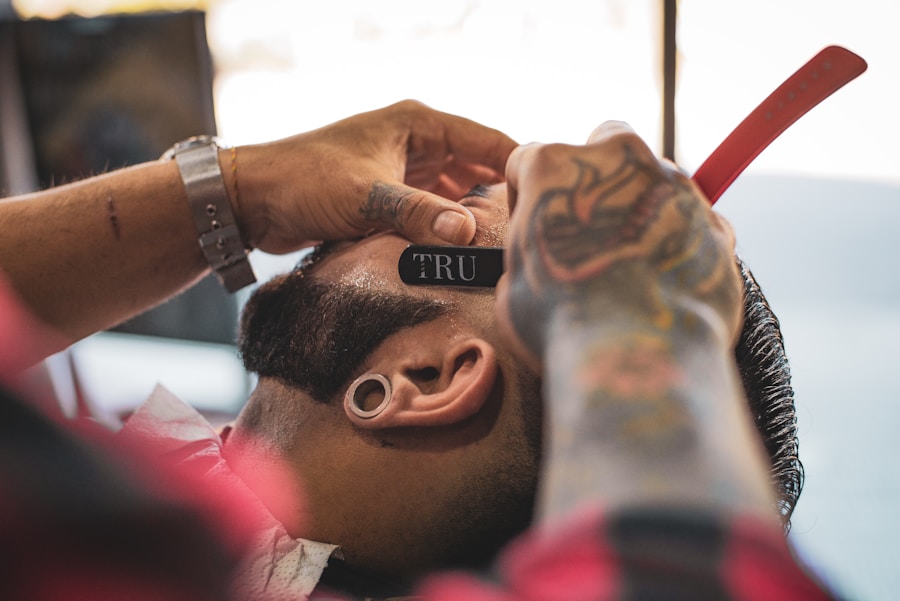Laser hair removal is a popular cosmetic procedure that uses concentrated beams of light to remove unwanted hair. The laser targets the pigment in the hair follicles, damaging them and inhibiting future hair growth. This process is effective for both small and large areas of the body, including the face, legs, arms, underarms, and bikini line. It is important to note that laser hair removal is not a one-time treatment; multiple sessions are typically required to achieve long-lasting results.
Laser hair removal is a safe and effective method for reducing unwanted hair, but it is not suitable for everyone. People with light skin and dark hair tend to have the best results, as the laser can easily target the pigment in the hair follicles. Those with darker skin tones may require a different type of laser to avoid damaging the surrounding skin. It is important to consult with a qualified dermatologist or cosmetic surgeon to determine if laser hair removal is the right option for you.
Preparing for Laser Hair Removal
Before undergoing laser hair removal, there are several steps you can take to prepare for the procedure. First, it is important to avoid sun exposure and tanning beds for at least six weeks prior to treatment, as this can increase the risk of complications and reduce the effectiveness of the laser. Additionally, you should avoid plucking, waxing, or electrolysis for at least six weeks before treatment, as these methods can disturb the hair follicle and interfere with the laser’s ability to target the pigment.
It is also important to shave the treatment area the day before your appointment, as the laser targets the hair follicle beneath the skin’s surface. This will ensure that the laser can effectively target the pigment in the hair follicles without interference from surface hair. Finally, it is important to follow any specific pre-treatment guidelines provided by your dermatologist or cosmetic surgeon to ensure the best possible results.
Choosing the Right Clinic
When considering laser hair removal, it is important to choose a reputable clinic with qualified professionals who have experience performing the procedure. Researching potential clinics and reading reviews from previous patients can help you make an informed decision. Additionally, it is important to schedule a consultation with the clinic to discuss your goals and expectations for the procedure.
During your consultation, be sure to ask about the qualifications and experience of the staff, as well as the type of laser technology used for the procedure. It is also important to inquire about any potential risks or side effects associated with laser hair removal, as well as the expected number of sessions required to achieve your desired results. Choosing a clinic with a knowledgeable and experienced staff can help ensure a safe and effective treatment.
Pre-Treatment Guidelines
Before undergoing laser hair removal, there are several pre-treatment guidelines that should be followed to ensure the best possible results. First, it is important to avoid sun exposure and tanning beds for at least six weeks prior to treatment, as this can increase the risk of complications and reduce the effectiveness of the laser. Additionally, you should avoid plucking, waxing, or electrolysis for at least six weeks before treatment, as these methods can disturb the hair follicle and interfere with the laser’s ability to target the pigment.
It is also important to shave the treatment area the day before your appointment, as the laser targets the hair follicle beneath the skin’s surface. This will ensure that the laser can effectively target the pigment in the hair follicles without interference from surface hair. Finally, it is important to follow any specific pre-treatment guidelines provided by your dermatologist or cosmetic surgeon to ensure the best possible results.
Post-Treatment Care
After undergoing laser hair removal, it is important to follow specific post-treatment care guidelines to ensure a smooth recovery and optimal results. It is common to experience some redness and swelling in the treated area immediately following the procedure, but these symptoms typically subside within a few hours. It is important to avoid sun exposure and tanning beds for at least six weeks after treatment, as this can increase the risk of complications and interfere with the healing process.
Additionally, it is important to avoid hot showers, saunas, and strenuous exercise for at least 24 hours after treatment to minimize irritation and discomfort. It is also important to apply a soothing moisturizer to the treated area regularly to keep the skin hydrated and promote healing. Following these post-treatment care guidelines can help ensure a smooth recovery and optimal results.
Managing Expectations
It is important to have realistic expectations when undergoing laser hair removal. While this procedure can significantly reduce unwanted hair, it is not a one-time treatment and multiple sessions are typically required to achieve long-lasting results. Additionally, some hair may regrow over time due to hormonal changes or other factors, requiring occasional maintenance treatments.
It is also important to understand that laser hair removal may not be effective for everyone, particularly those with light or fine hair. Consulting with a qualified dermatologist or cosmetic surgeon can help you determine if laser hair removal is the right option for you and manage your expectations for the procedure.
Long-Term Maintenance
After completing a series of laser hair removal sessions, long-term maintenance may be required to maintain optimal results. While some people may experience permanent hair reduction, others may require occasional touch-up treatments to address any regrowth that occurs over time. It is important to consult with your dermatologist or cosmetic surgeon to develop a long-term maintenance plan that meets your specific needs and goals.
In addition to occasional touch-up treatments, it is important to continue following a regular skincare routine that includes sun protection and moisturization. This can help maintain healthy skin and minimize any potential side effects associated with laser hair removal. By following a long-term maintenance plan and continuing to care for your skin, you can enjoy long-lasting results from laser hair removal.






